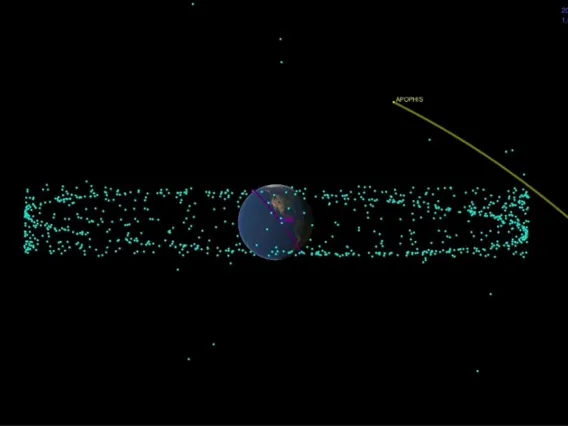LPL Newsletter for July 2022
Friday, July 1, 2022
This month, we feature new research, led by postdoctoral fellow Jacob Bernal and conducted at the Kuiper Materials Imaging and Characterization Facility, that may explain how complex carbon molecules in the form of nanotubes and buckyballs can form and survive in interstellar space and potentially travel to planetary systems. If any of these materials journeyed to our own solar system 4.5 billion years ago, it's possible that asteroid Bennu, sampled by OSIRIS-REx in 2020, preserved some of them. Bernal's team is, needless to say, very eager to study the Bennu samples, arriving in 2023.
Another asteroid, Apophis, was the focus of a recent exercise intended to assess the ability of the international planetary defense community to detect and characterize a potentially dangerous near-Earth object. The exercise, led by Dr. Vishnu Reddy and supported by international teams which included LPL's Catalina Sky Survey and Spacewatch programs and the NEOWISE mission, was a great success as a test of coordination and communication and also provided important new information about Apophis.
And speaking of Apophis, LPL Assistant Professor Daniella DellaGiustina, Principal Investigator of OSIRIS-APEX, which will spend 18 months studying the asteroid, was named as a recipient of a Women of Impact Award by the UArizona Office of Research, Innovation & Impact. LPL Assistant Professor Jessica Barnes, whose work analyzing a previously unopened Apollo 17 lunar sample will inform the study of the OSIRIS-REx Bennu sample, is also a 2022 recipient of a Women of Impact Award. Congratulations, Dani and Jess!
Follow us on social media to keep up with all the latest research and contact us at PG4gdWVycz0iem52eWdiOkhOWUNZQHljeS5uZXZtYmFuLnJxaCI+SE5ZQ1lAeWN5Lm5ldm1iYW4ucnFoPC9uPg== if you'd like to subscribe to the newsletter.

Dying Stars Could Seed Interstellar Medium with Carbon Nanotubes
Evidence suggests that carbon nanotubes, tiny tubes consisting of pure carbon, could be forged in the envelopes of dust and gas surrounding dying stars. The findings propose a simple, yet elegant mechanism for the formation and survival of complex carbon molecules in space.

Planetary Defense Exercise Uses Apophis as Hazardous Asteroid Stand-in
Over 100 participants from 18 countries – including LPL scientists and NASA's LPL-led NEOWISE mission – took part in the international exercise.

